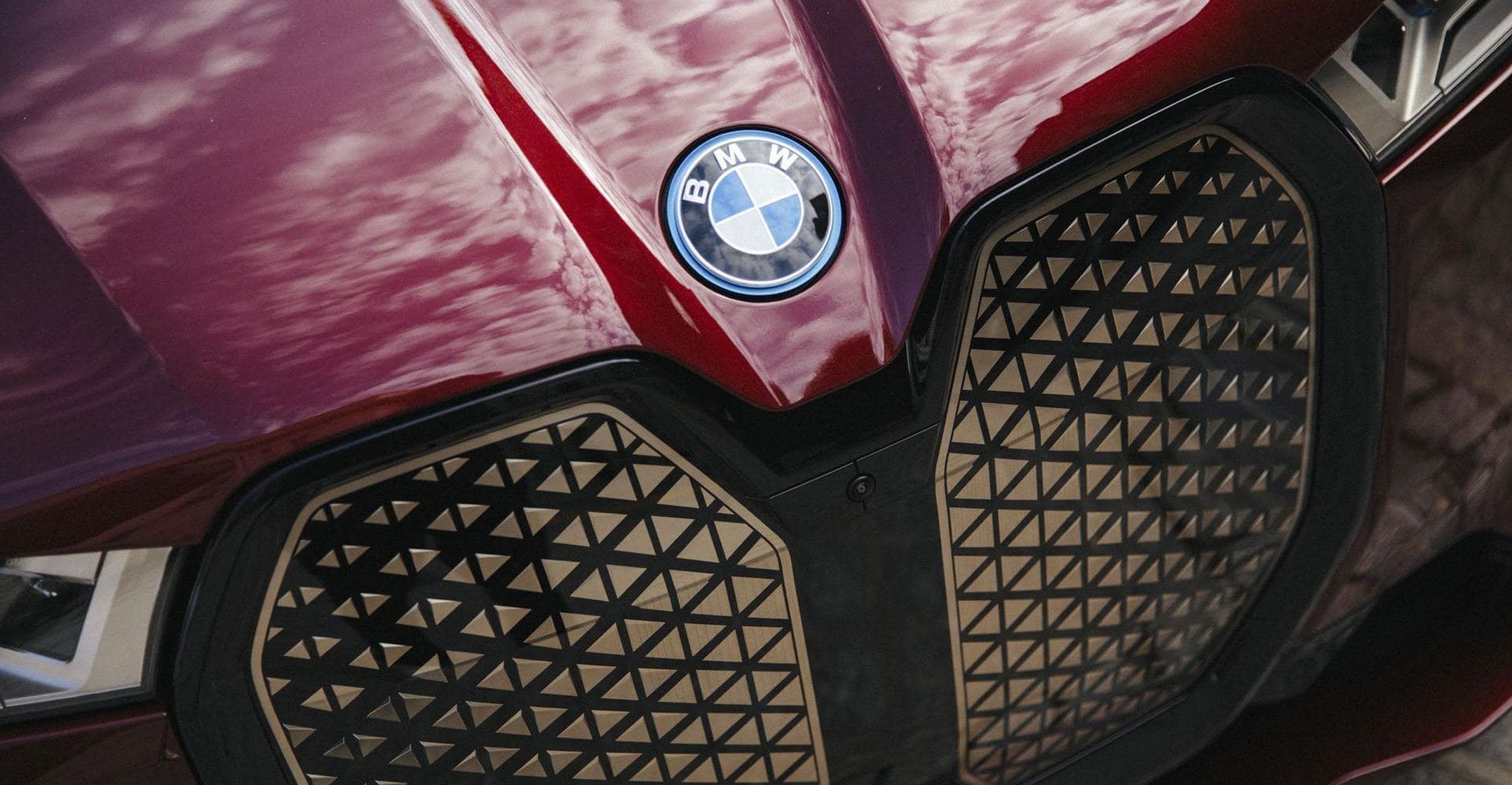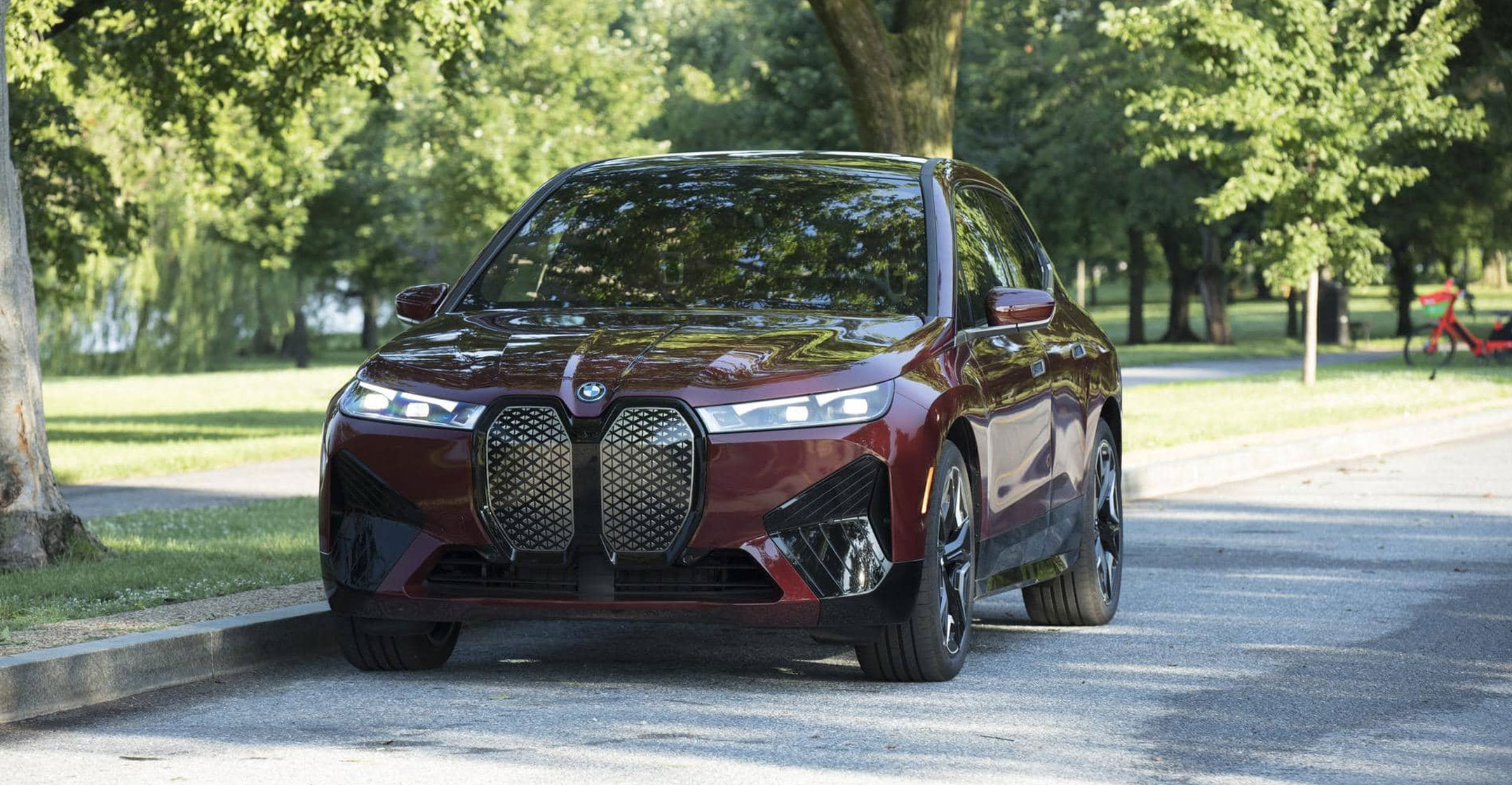 BMW has finally made a new electric car, the iX SUV. I say “finally” because the last we heard — product-wise — from BMW regarding electric technology was the tiny and lacklustre i3 that debuted in 2011.
BMW has finally made a new electric car, the iX SUV. I say “finally” because the last we heard — product-wise — from BMW regarding electric technology was the tiny and lacklustre i3 that debuted in 2011.
The US$83 200 iX (that’s R1.3-million on a direct exchange-rate conversion), on the other hand, offers seating for five and 480km-plus of driving range. It’s not exciting to drive, like a sportscar. It lacks the styling cues of even BMW’s X6M, one of my all-time favorite SUVs. But it does offer a well-built, thoughtfully appointed cabin and quick handling for its spacious size.
The iX is like a just-plain-decent person you might try dating because, why not? It offers a competent way of navigating daily life for BMW-brand faithful who find themselves, against all odds, curious about getting an electric vehicle.
Let’s just get this out of the way first: The BMW iX does not look as bad at hand as it does in photos.
Not that the iX comes off as a supermodel by any stretch of the imagination. Its hunched rear quarter looks as if some Bavarian engineers scrunched it together in a rush. From some angles it even looks (gasp) like the rear of a minivan. It has those engorged black grilles that are now just reminiscent of the suggestion of BMW’s iconic kidney grille; some in the peanut gallery have likened them to a grotesque caricature of beaver teeth. (I’m not bothered that much by them, and there is plenty of historical precedent at BMW for such a monstrous mien; this, as you’ll find in polite company, is a minority opinion.) The hexagonal shape of the steering wheel is atrocious. If it weren’t for those buck teeth and thinly sliced LED headlights, the whole thing would look pretty generic.
Surprised
Still, I was surprised to see that the iX looked better as I retrieved it early on 9 September at the Kempinski Hotel Berchtesgaden. After a day-long drive through green Bavarian hillsides dotted with milk cows wandering in bovine bliss, followed by a stop at BMW’s Group Plant at Dingolfing and then a drive to the Munich airport, I found that — despite its looks — the iX is a competent, practical crossover-style EV that fully delivers BMW’s excellent craftsmanship and quality.
It has taken some time for BMW to catch up with Porsche, Audi and Tesla in offering a premium electric family hauler, but for wealthy consumers partial to the Bayerische Motor Works badge, the iX will have been worth the wait.
I mention “partial to the badge” because there is nothing so extraordinary in the iX to compel hordes of, say, Audi lovers to suddenly drop their key fobs and switch brands. Most consumers today shop the badge more than anything else. If a luxury vehicle owner is loyal to a specific brand, it’s more difficult than ever for a rival brand to woo them away, according to the JD Power 2020 US Automotive Brand Loyalty Study.
Thanks to new innovations in the iX, BMW has done enough here to retain, even excite, its brand loyalists
But thanks to new innovations in the iX, BMW has done enough here to retain, even excite, its brand loyallists — so long as they understand that owning an electric vehicle today is an inexact science, that is. Training salespeople how to knowledgeably sell a luxury electric vehicle will be BMW’s prime task in selling this shiny new thing, Pieter Nota, a member of the Board of Management at BMW, told me over dinner one night near the Austrian border.
Here’s an example of a little thing that can seem like a big deal to the new buyer, or to the EV-uninitiated: As I first approached the vehicle, it unlocked via an app on a smartphone I had borrowed for the day. This made me extremely nervous, since I know how casually I treat my smartphone.
“What happens when my phone dies? How will I unlock the car?” I asked the nice German man who had handed me the iPhone “key”, a BMW-logo earring in his left ear. “You can charge it off the car,” he told me. Uh. I pressed on. What if the car were locked? Or my phone is lost — or stolen?

“That will be a problem,” he finally admitted. A regular key fob comes standard for this electric SUV, even if potential customers are shown the “cool” app way to unlock their car first. There’s no way I would trust myself to run it via only a phone. The folks selling iXs will really need to know how to hold hands with potential buyers when it comes to explaining even simple things like that.
Once inside on my own, it took only a minute to orientate myself to BMW’s high-quality, calming cabin and excellent new interface, which is a big improvement over the confusing, inefficient, overly complex iDrive we had in older cars. The frameless doors, panoramic glass sunroof, open-pore wooden dashboard, crystal-cut buttons, and novel scrolling “shifter” felt well-made, modern, and refreshingly simple in the iX’s lounge-like atmosphere.
I like that BMW has done a mix here between the new, fully digital and curved display grouping (a 12.3-inch information display and 14.9-inch control display touchscreen interface) and tangible buttons and knobs. The function should dictate which command requires a button or a touch; a blanket decision to eliminate one or the other would feel insensitive.
Plenty of power
BMW has taken considerable steps to join the likes of Volvo and Rivian in making its interior sustainable. iX contains almost no chrome accents (for aesthetic reasons, if not altruistic ones) and has lots of secondary raw materials including reused plastic, FSC-certified wood, leather that was tanned using olive leaf extract, and floor coverings and mats made from recycled fishing nets.
I had been inside the vehicle briefly a day earlier for a demonstration about its self-parking ability. There was one hiccup: a forced start and restart, as the vehicle had moved off the “correct” line in which to park and had to be manually reorientated. BMW will need to make its auto-park programme more durable and adaptable to address the myriad variations of real-world parking.
Still, for the duration of my own day with the iX, it made me feel as relaxed as those contented grass-fed cows. The iX has the length and width of a BMW X5, the height of a BMW X6, and the wheel dimensions of the BMW X7, so it felt plenty familiar from behind the wheel when it came to size and heft. I lazily cruised through tiny towns on Bavaria’s slow back roads, passing startled locals as time and space allowed with plenty of power from the 390kW dual-electric motors. (I drove the iX iDrive50; a presumably less-expensive iX iDrive40 is also being built.)
 I floored it on sections of the autobahn where I had the opportunity, easily hitting 120mph (193km/h) in this all-wheel drive, 2.6t rig. (Top speed is electronically limited to 200km/h.) The iX felt stable and oh, so quiet, except for the exciting (manufactured) whirr of the electric motor and general hum of the tires on the road. Zero to 100km/h takes 4.6 seconds.
I floored it on sections of the autobahn where I had the opportunity, easily hitting 120mph (193km/h) in this all-wheel drive, 2.6t rig. (Top speed is electronically limited to 200km/h.) The iX felt stable and oh, so quiet, except for the exciting (manufactured) whirr of the electric motor and general hum of the tires on the road. Zero to 100km/h takes 4.6 seconds.
iX offers the choice of adaptive or individually adjustable recuperation on the brakes, which helps increase overall efficiency and enable one-pedal driving and coasting. It’s nice to switch between those modes, depending on your energy needs and how heavy the traffic is.
I spent most of the day in the most gentle of regenerative brake modes; there are several others to choose among, depending on how much you want to drive using a single pedal. BMW says charging from 10% full to 80% full on a DC fast charger will take a (relatively) quick 35 minutes. BMW will be selling a home charger, though a spokesman declined to specify the price. “Similar to competitors,” he said.
After a quick tour of a portion of Dingolfing’s 2.45 million square metre campus (the plant manufactures battery cells using 100% green energy from certified sources), I departed for the airport, where I arrived calm and refreshed. Against all odds — since car navigation systems never seem to work well — BMW’s new route-planning guidance performed without a hitch. An interior camera even took snapshots of the verdant Alps along the way. Posterity! My luggage, coats, and associated travel paraphernalia had weathered the journey in spacious ease; the absence of the centre tunnel found in internal combustion vehicles created additional legroom and plentiful space for storage. — (c) 2021 Bloomberg LP




